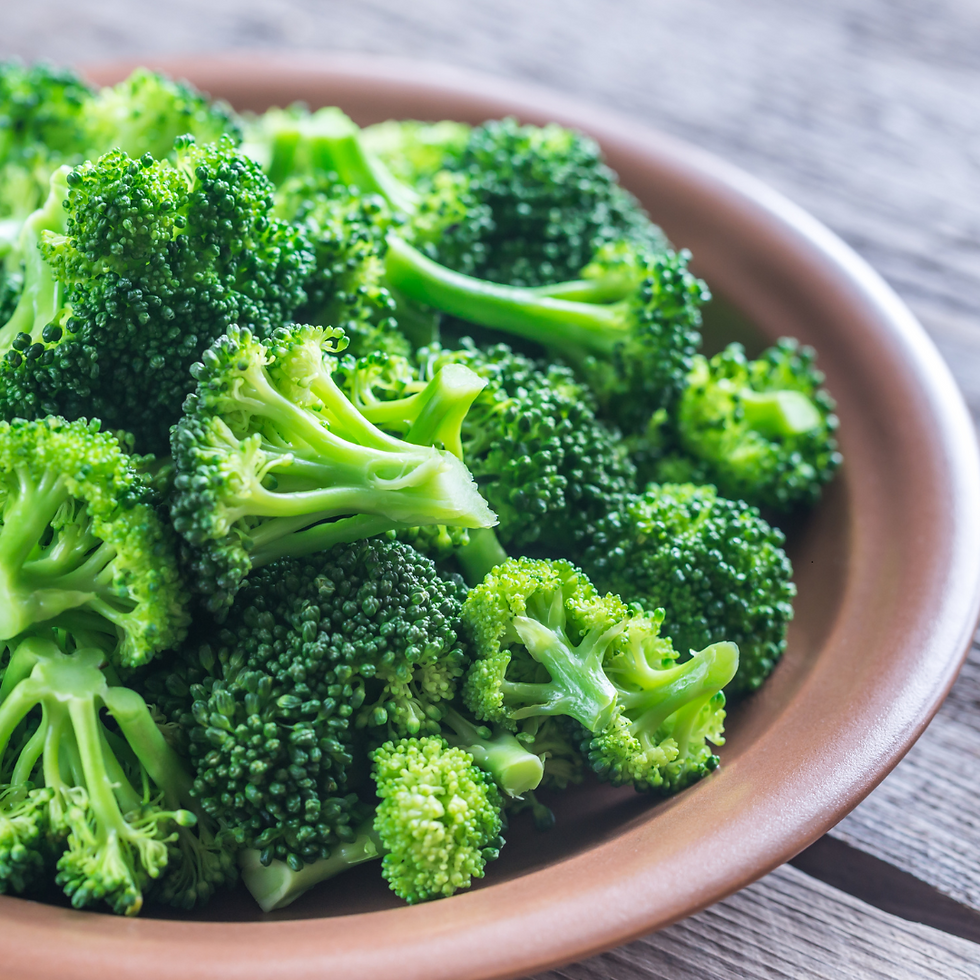Fiber: The Unsung Hero for Wellness, Weight Loss, and Satiety!
- leylew
- Jul 22
- 4 min read
If you’ve ever been told to “eat more fiber,” you’re not alone—but do you actually know why fiber is so powerful for your health, weight, and digestion? Let’s go beyond the basics and clear up some common misconceptions about this dietary powerhouse.

What Is Fiber, Really?
Fiber is the indigestible part of plant foods. Unlike carbs, fats, or proteins, fiber passes through your digestive tract mostly intact. But here’s the cool part: just because we can’t digest it doesn’t mean it’s not doing important work! In fact, fiber acts as food for the beneficial bacteria living in your gut (your microbiome). These bacteria break down certain fibers and, in the process, produce short-chain fatty acids that help nourish your gut lining, support your immune system, and even impact mood and metabolism.
Beyond its role in nurturing your gut, fiber offers a range of impressive health benefits. For instance, it's a champion for heart health, helping to lower cholesterol levels and reduce the risk of heart disease. A high-fiber diet is also linked to a reduced risk of chronic diseases, including type 2 diabetes, certain types of cancer, and various digestive conditions. So, while fiber seems to “just pass through,” it’s actually fueling an entire ecosystem inside you and contributing significantly to your overall well-being!
Types of Fiber: Soluble vs. Insoluble
Soluble Fiber:
This type dissolves in water to form a gel-like substance in your gut. It helps slow digestion, stabilize blood sugar, and lower cholesterol. Foods like oats, beans, and certain fruits are often highlighted for their soluble fiber content.

Insoluble Fiber:
This type doesn’t dissolve in water. Instead, it adds bulk to your stool and helps keep things moving, which is key for regularity and preventing constipation. Foods like whole grains, nuts, seeds, and many vegetables are usually noted for their insoluble fiber.

Most fiber-rich foods naturally contain a mix of both soluble and insoluble fiber!
When we talk about a food being a “source” of soluble or insoluble fiber, we’re typically referring to which type is most predominant in that food. For example, apples are often called a good source of soluble fiber, but they actually contain both types—just a bit more soluble than insoluble.
The takeaway:
You don’t need to stress about tracking every type of fiber in most cases. By simply eating a variety of plant-based, fiber-rich foods, you’ll naturally get a healthy balance of both types to support your digestion and overall health.
Fiber Myths & Misconceptions
“Fiber upsets my stomach.”
If you’re not used to eating much fiber, adding a lot quickly can cause gas or bloating. Go slow, increase your water, and remember: tolerance is individual. If you have digestive issues, there’s always a reason—and it can get better with the right approach! “Only grains have fiber.”
Nope! While whole grains are great sources, fiber is abundant in fruits, veggies, legumes, nuts, and seeds. In fact, many of the highest-fiber foods are single-ingredient plant foods. We should include a variety of different sources of fiber in your diet.
“Fiber is just for regularity.”
Fiber does so much more! It helps manage weight by keeping you full, balances blood sugar, lowers cholesterol, and even reduces the risk of chronic conditions like heart disease, type 2 diabetes, and certain cancers.
Hydration & Fiber: Why Water Matters
One of the most overlooked parts of increasing fiber is hydration! Fiber needs water to do its job. If you ramp up your fiber but don’t also increase your fluid intake, you could actually make constipation or bloating worse. Every time you add more fiber, make sure you’re sipping extra water throughout the day.
When Fiber Still Feels Problematic…
If you’ve increased fiber gradually, focused on a variety of sources, and are staying hydrated—but you’re still struggling with digestive issues (like bloating, constipation, or discomfort)—it may be a sign that something deeper is going on. Conditions like SIBO (Small Intestinal Bacterial Overgrowth), IBS, or other gut imbalances can make fiber tricky to tolerate. In these cases, don’t just “push through”—it’s important to work with a knowledgeable practitioner (like me!) who can help you dig deeper, get to the root of the issue, and create a plan that actually works for your unique gut.
How Much Fiber Do You Actually Need?
A good rule of thumb: aim for 14 grams of fiber per 1,000 calories you eat. Most Americans fall far short of this goal! Focus on adding a variety of fiber-rich, whole foods to your daily meals.
High-Fiber Foods to Try
Here are some of my favorites (per 100g):
Fruits: Raspberries (6.5g), Blackberries (5.3g), Pears (3.1g), Apples (2.4g)
Veggies: Broccoli (2.6g), Brussels Sprouts (3.8g), Carrots (2.8g), Avocado (6.7g!)
Legumes: Lentils (10.7g), Kidney Beans (7.4g), Chickpeas (7g)
Grains: Oats (10.1g), Quinoa (6.4g), Brown Rice (3.5g)
Seeds: Chia (34.4g), Flaxseed (27g)—super concentrated, so use in small amounts!

Remember, portion sizes and tolerance matter. If you’re sensitive, start slow and listen to your body.
Pro Tips for Boosting Fiber (Without Bloating!)
Add veggies or a high fiber fruit to every meal (even breakfast!).
Swap white grains for whole grains.
Sprinkle chia or flaxseed on oatmeal, yogurt, or salads.
Hydrate! Fiber needs water to do its job.
The Bottom Line
Fiber isn’t just about going to the bathroom—it’s about thriving. From gut health to blood sugar, weight loss to long-term wellness, fiber is your secret weapon. If you’re ready to take your nutrition to the next level (and want a plan that’s tailored just for you), I’m here to help!
Questions? Need personalized guidance?
Schedule a free discovery call and let’s create a plan that works for your body, your goals, and your lifestyle. 👉 Book your free discovery call
This information is for educational purposes and not a substitute for medical advice. Always consult your healthcare provider before making changes to your diet or lifestyle.






Comments